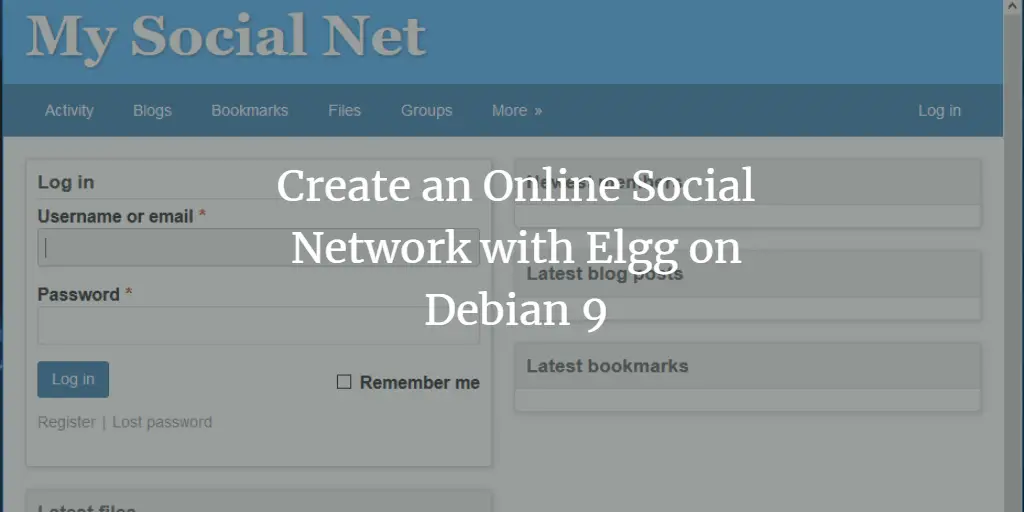Articles by Matt Vas
-
Create an Online Social Network with Elgg on Debian 9
Author: Matt Vas • Tags: debian, linux, web server • Comments: 0Elgg is a free open source social engine framework software written in PHP programming language. This tutorial, I will show you how to install and configure the latest Elgg version on Debian 9 in order to create a free online social network.
-
How to Install EspoCRM Open Source CRM Software on Debian 9
 Author: Matt Vas •
Tags: debian, linux, web server •
Comments: 2
Author: Matt Vas •
Tags: debian, linux, web server •
Comments: 2 In this guide, we’ll show you how to install and configure the latest version of the EspoCRM software on Debian 9 on top of a LAMP stack, in order to create a free online Customer Relationship Management platform for your company.
-
How to install SuiteCRM on Debian 9
 Author: Matt Vas •
Tags: debian, linux, web server •
Comments: 1
Author: Matt Vas •
Tags: debian, linux, web server •
Comments: 1 This tutorial shows how to install the latest version of the SuiteCRM platform on a Debian 9. SuiteCRM, a fork of SugarCRM, is an enterprise open source Customer Relationship Management (CRM) platform.
-
-
How to Install Pydio Web File Manager on Debian 9
 Author: Matt Vas •
Tags: debian, linux, web server •
Comments: 2
Author: Matt Vas •
Tags: debian, linux, web server •
Comments: 2 Pydio is a powerful open source web file sync and file share solution software for online collaboration, similar to Gdrive or other online file-sharing services. In this tutorial, we’ll cover the installation and configuration process of the Pydio Community Edition from source on Debian 9 release, on top of LAMP stack.
-
How to Install DokuWiki with Apache on Debian 9
 Author: Matt Vas •
Tags: apache, linux, web server •
Comments: 3
Author: Matt Vas •
Tags: apache, linux, web server •
Comments: 3 DokuWiki is a free open source wiki application written completely in the PHP programming language and often deployed in Linux under Apache/Nginx web servers and PHP. This tutorial I will show you how to install and configure the latest version DokuWiki CMS platform on Debian 9.2 release, in order to create online documentation websites.
-
Add a new Host and Services to be Monitored by Icinga 2
 Author: Matt Vas •
Tags: monitoring •
Comments: 5
Author: Matt Vas •
Tags: monitoring •
Comments: 5 In this tutorial, I will show you how to add a new host to be monitored by Icinga 2 and how the host’s services, such as a web HTTP server, can be monitored by Icinga. I will also show you how to create your own custom Icinga plugin command in order to monitor UDP services in your network infrastructure.
-
How to Install Icinga 2 Monitoring Tool on Debian 9.2
 Author: Matt Vas •
Tags: debian, linux, monitoring •
Comments: 10
Author: Matt Vas •
Tags: debian, linux, monitoring •
Comments: 10 In this guide we will discuss how to install and configure the latest version Icinga 2 web monitoring tool in Debian 9.2 release, in order to monitor all important network infrastructure devices, such as physical or virtual servers or VMs, routers, switches, firewall appliances and other network IoT devices.
-
Install WebMail Lite PHP based Webmail Client on Debian 9.1
 Author: Matt Vas •
Tags: debian, email, linux •
Comments: 1
Author: Matt Vas •
Tags: debian, email, linux •
Comments: 1 In this guide, we’ll show you how to install the latest version of WebMail Lite PHP in Debian 9.1 and show you how to configure the application to fetch e-mails from a popular mail service Yahoo! Mail. The tutorial can be used for your own mail services as well, Yahoo is just used as an example.
-
Install Debian 9 (Stretch) via PXE Network Boot Server
 Author: Matt Vas •
Tags: debian, linux •
Comments: 3
Author: Matt Vas •
Tags: debian, linux •
Comments: 3 In this tutorial, we’ll guide you on how to install the latest version of Debian 9 server via a PXE server with internet remote HTTP mirror sources offered by Debian archive mirrors. The DHCP server that we’ll use in this tutorial to setup PXE environment will be ISC-DHCP Server and the netboot Debian files will be served on the local network by TFTPD-HPA server.
-
How to Install PrestaShop on Debian 9
 Author: Matt Vas •
Tags: apache, debian, mysql, php, web server •
Comments: 4
Author: Matt Vas •
Tags: apache, debian, mysql, php, web server •
Comments: 4 In this guide, we’ll show you how to install and configure the latest version of Prestashop on Debian 9.1. Prestashop is a free Open Source e-commerce content management platform written in PHP programming language which is often deployed on Linux under Apache/Nginx web servers, PHP and MySQL/MariaDB database management system.

